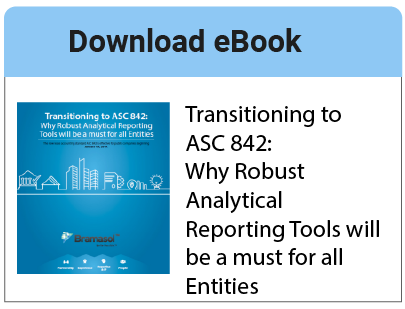In too many instances, as CIOs and CFOs implement new software to improve finance processes, the expediency of getting systems up and running quickly can create isolated silos of inefficiency across the enterprise-wide technology landscape.
The resulting build up of patchwork software systems is sometimes referred to as "Digital Debt". As with real world debt, Digital Debt must be serviced with high on-going costs; primarily in the form of low productivity, time-consuming data reconciliation, lack of end-to-end visibility and continuous maintenance updates.

Sources of Digital Debt
Digital Debt results from the accumulation of processes, data and systems that have evolved over the years to create a situation where change of any type is costly and difficult. Some of the ways that Digital Debt accumulates include:
- Merger & Acquisition deals that require integrating disparate systems
- Departmental or regional level decisions on software implementation
- Adopting standalone solutions to meet compliance requirements deadlines
- Creation of specialized code to meet different country-level regulations & mandates
- Choosing multiple SaaS applications that don't interface with each other
- Focusing on short-term objectives rather than long-term goals
- Unwillingness to invest in a comprehensive enterprise-wide software roadmap
Common Symptoms of Digital Debt
There are many indicators that your company has excessive Digital Debt. Often several of the symptoms listed below will appear together:
- Lack of flexibility and agility
- Inability to measure results
- Lack of end-to-end visibility
- Need for ongoing data manipulation and reconciliation between systems
- High maintenance costs and slow support responses
- Limited scalability options
- Orphaned code that no one knows how to update
- End users resorting to manual offline workarounds to get what they need
Keys to Understanding, Mitigating and Avoiding Digital Debt
Fit-to-Standard vs Fit-to-Purpose
One of the overriding issues that influences creation of Digital Debt is whether a company takes a Fit-to-Standard or Fit-to-Purpose approach to their software implementation.
Basically a Fit-to-Standard philosophy defaults toward choosing systems that meet core objectives and then doing your best to avoid resorting to customized modifications. In contrast, a Fit-to-Purpose approach leans toward custom tailoring of the software for whatever it takes to meet a specific list of requirements from users, managers and other stakeholders.
Bramasol's core practices are aligned with SAP's recommendations for leveraging a Fit-to-Standard approach to configure solutions that are as close as possible to standard processes. Because the entire SAP ecosystem of applications is architected around shared core ERP and finance systems, that are built with a continuous emphasis on seamless interoperability, SAP provides ample leeway to tailor functionality for specific customer needs while still adhering to an overall Fit-to-Standard philosophy.
By leveraging Fit-to-Standard, customers can later adopt new invocations and best practices for their industry at a much faster pace than if they had started with a custom solution that was built outside the standard.
Building a Roadmap with S/4HANA
Accelerated adoption of SAP S/4HANA was previously identified as one of our Key Trends to Watch in 2022, and it also offers an excellent opportunity for mitigating Digital Debt. By unifying all financial data within a single-source-of-truth, S/4HANA enables applications such as Billing and Revenue Innovation Management (BRIM), Revenue Accounting and Reporting (RAR), lease accounting, and others to seamlessly interface with enterprise-wide financial functions such as treasury management, FP&A, etc.
Leveraging this built-in compatibility in a well-planned S/4HANA migration roadmap offers companies an excellent way to incrementally eliminate any accumulated Digital Debt while simultaneously establishing a highly extensible foundation for future additions of "debt free" fully integrated applications.
Leveraging RISE with SAP
Building on the S/4HANA enabled Intelligent Enterprise concept, RISE with SAP provides a unified set of migration and optimization capabilities within a single package. It is designed to help businesses move from where they are to a seamlessly integrated, holistic, enterprise scale, S/4HANA environment.
RISE with SAP technical migration tools can be very helpful for companies that are looking to move their processes into the overall scope of business transformation. The infrastructure elements in RISE with SAP provide a helpful pathway for clients that are looking to migrate from on-premise or legacy environments to S/4HANA while reducing their Digital Debt.
Embedding Analytics Everywhere
As discussed many times in this blog series, embedded analytics are critical for effectively managing end-to-end, enterprise-wide financial processes. Within the SAP ecosystem, SAP Analytics Cloud (SAC) has become an important unifying capability for pulling together disparate information from both SAP and non-SAP applications, giving users the ability to analyze, plan, predict and report all in one place.
Because SAC is a seamless part of SAP S/4HANA and can agnostically incorporate data from legacy systems, it also provides an excellent tool for identifying Digital Debt and helping monitor the process of reducing it.
Summary
The first step in reducing Digital Debt is identifying where it is and how it is impacting your company. Unlike interest expense on traditional debt, there isn't a convenient line item for tracking Digital Debt. At Bramasol, we've developed a structured set of workshops as part of our digital transformation and S/4HANA migration roadmaps, which also focus on identifying Digital Debt and other fit-gap issues as part of the implementation planning process.
For help with identifying your company's Digital Debt and formulating a plan to reduce it,
Contact Us Here to Talk with a Bramasol Expert

.png?width=3121&name=MicrosoftTeams-image%20(33).png)


